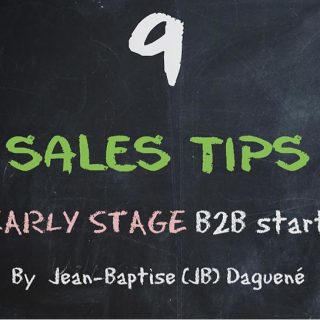Targeting international markets with your startup can be a highly rewarding activity if done right. However, it can also present legal, financial, and cultural challenges. Every expansion into a new national or regional market comes with its own set of considerations.
For the global operations of your startup to be profitable, research and planning are paramount. In addition to knowing in advance how to manage currency exchange fluctuations, payment systems, and taxes, you must also develop a deep knowledge of the cultural values and traditions of the countries you want to do business in.
Let's explore six key things you should know on how to go global with your startup.
#1 Researching Local Markets
Using a standardized approach for every market you operate in is one of the major mistakes in international management. What works in one national (or even regional) market may not work or even be counter-productive in another.
You should carefully assess whether your product or service is viable in the new market and what is the best way to promote it and engage your target audience. In the new country, your product or service may appeal to different demographics or lifestyle communities. Sometimes, you may have to change the market segment you are going to target.
Analyzing the current and potential competitors is also crucial to determine whether you can successfully create a competitive advantage in that market, which is a prerequisite for medium and long-term profitability.
#2 Understanding Laws and Trade Regulations
First of all, you should determine what type of investment you are going to make in the target country. Are you going to open up production facilities and service points, or will you simply export your products from your origin country?
In the first case, you will probably have to create a new legal entity to operate and abide by the commercial, business, and tax laws of that country. These regulations may significantly differ from the ones you're used to, so consulting with legal and tax professionals is usually highly recommended. Some countries have no restrictions on foreign investments, while others may set some limitations.
If you don't plan to have your production facilities in the new country, you should also consider export and income regulations and whatever commercial agreement exists between your origin country and the target market. These regulations are there to ensure that competition is fair and that both businesses and consumers are protected from unfair practices.
Studying the legal framework of the target country in advance is highly recommended and can prevent you from finding yourself in difficult scenarios, which may also end up weighing on your organization's finances.
As a startup owner or manager, you should also be aware of the biggest legal risks in the new market. Failing to comply with local laws can result in fines and, depending on the severity of the violation, even criminal proceedings.
#3 Developing a Global Strategy
A global strategy is a plan that outlines how your startup is going to compete in the global market. It should include plans for your business operations on an international scale, ranging from production to marketing, to pricing, to distribution, to customer relationships. While it's essential to define local strategies and tactics to operate in specific national markets, they should still be coordinated to ensure consistency and synergy across markets as a whole.
For example, higher prices on basic products in a particular emerging market may be compensated by premium prices on augmented products in a more developed national market. Having the proper coordination ensures the business as a whole is profitable and sustainable.
Startups should also consider the advantages of globalizing production and service delivery, including economies of scale in manufacturing, cost savings from shared services, standardization of processes, and access to large international pools of talent.
#4 Considering Language Barriers
While linguistic diversity is a great cultural asset for our planet, it can represent an obstacle for businesses. According to data provided by Ethnologue, there are currently 7,151 languages spoken in the world today. The challenges in operating in markets where different languages are spoken can be felt when communicating with suppliers, defining the right promotional strategies, and providing quality customer service.
One way to deal with language barriers is to either hire bilingual employees or hire native speakers for each country in which the country is going to operate. This solution may be the best when you're planning a significant investment in the target country and want to set up an almost autonomous organizational structure in that market.
However, this is a less feasible option when operating from your origin country and exporting your products or services worldwide. In this case, contracting a translation and localization agency is the best call. Professional and experienced agencies like Circle Translations can ensure that whatever textual, vocal, visual, and emotional piece of content is not only perfectly understandable by your target audience but it's also converted in a way that feels local to local customers and suppliers. These agencies are used to operating in multiple industries and can typically provide their services to companies operating in areas as different as information technology, finance, food, tourism, and fashion.
#5 Prepare for Cultural Differences
Awareness of your target countries' social and cultural aspects is another crucial component on how to globalize your startup. It can help ensure successful business operations and positive relationships with customers, suppliers, investors, institutions, and other stakeholders.
Before venturing into a new country, you should make an effort to learn about the local customs and etiquette, which includes which behaviors are considered appropriate in the country you are entering and what are acceptable forms of communication.
Behaviors considered friendly and pleasant in your origin country may be perceived as disrespectful in the target nation, if not offensive.
You should also learn about the local business culture. This includes finding out about acceptable business etiquette, such as how people address each other, what is the standard practice for closing deals, and what's the most effective way of networking.
#6 Identifying Helpful Technologies
Technological advancements have been very beneficial for businesses of all size, from startups to major corporations.
One example is CRM (Customer Relationship Management). This system helps you keep track of your clients and prospects from all over the planet and manage communications with them. This can make serving international customers both easier and cheaper as well effective.
Another example is e-commerce software. Decades ago, it was unthinkable for somebody in Japan to buy a product in the Netherlands in two minutes using a computer. Today, even small entrepreneurs with a limited budget set up their online stores and reach potential clients on the other side of the planet. Moreover, analytics tools allow businesses to understand their customers better and improve their marketing strategies and tactics accordingly.
Other examples of technologies and digital solutions that can help you implement an international business strategy are social media, cloud computing, international payment solutions, and marketing automation tools.
Startups tend to have limited budgets compared to established big companies and leveraging the full potential of technological advancements can help them keep the costs down while still remaining fully competitive.












